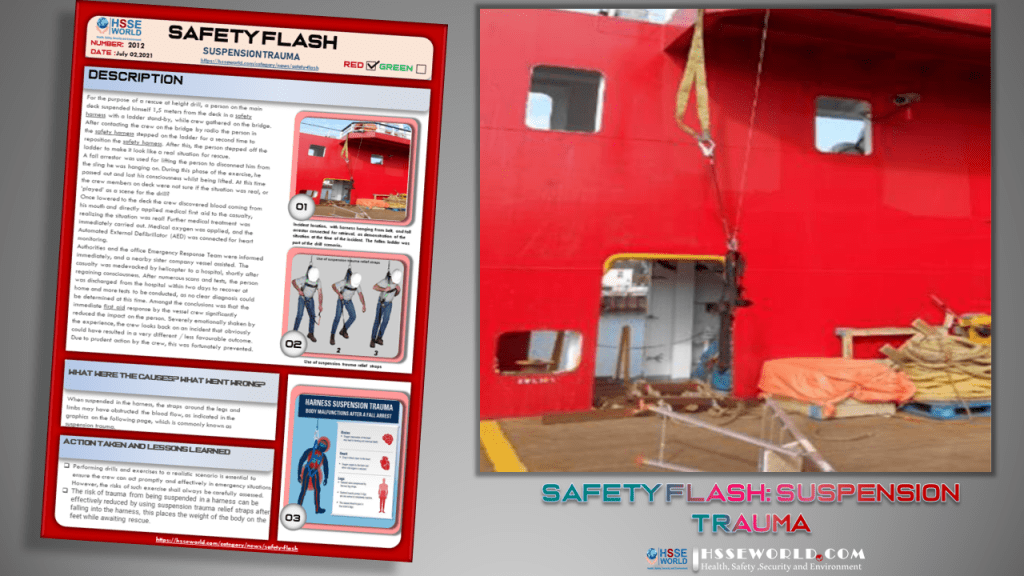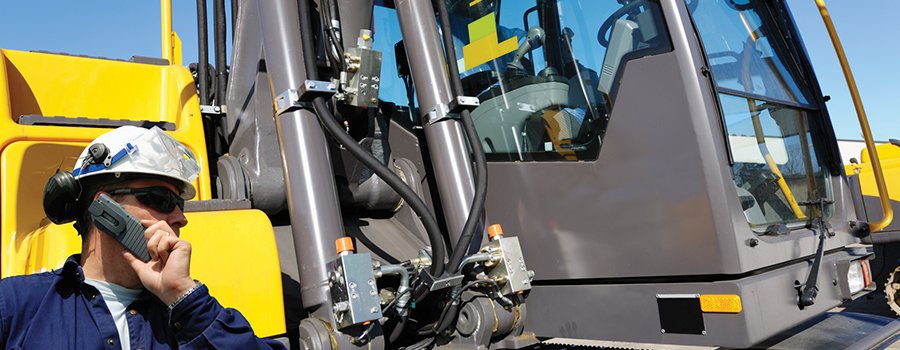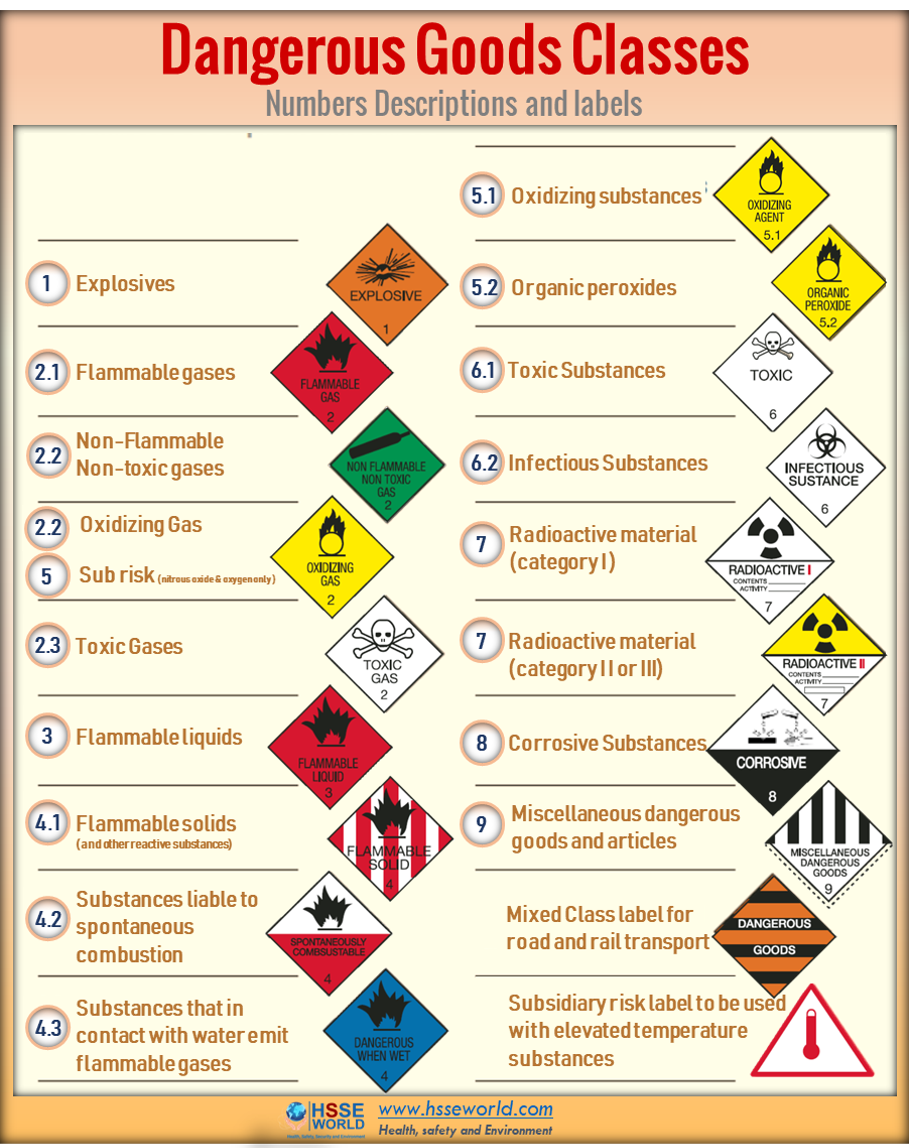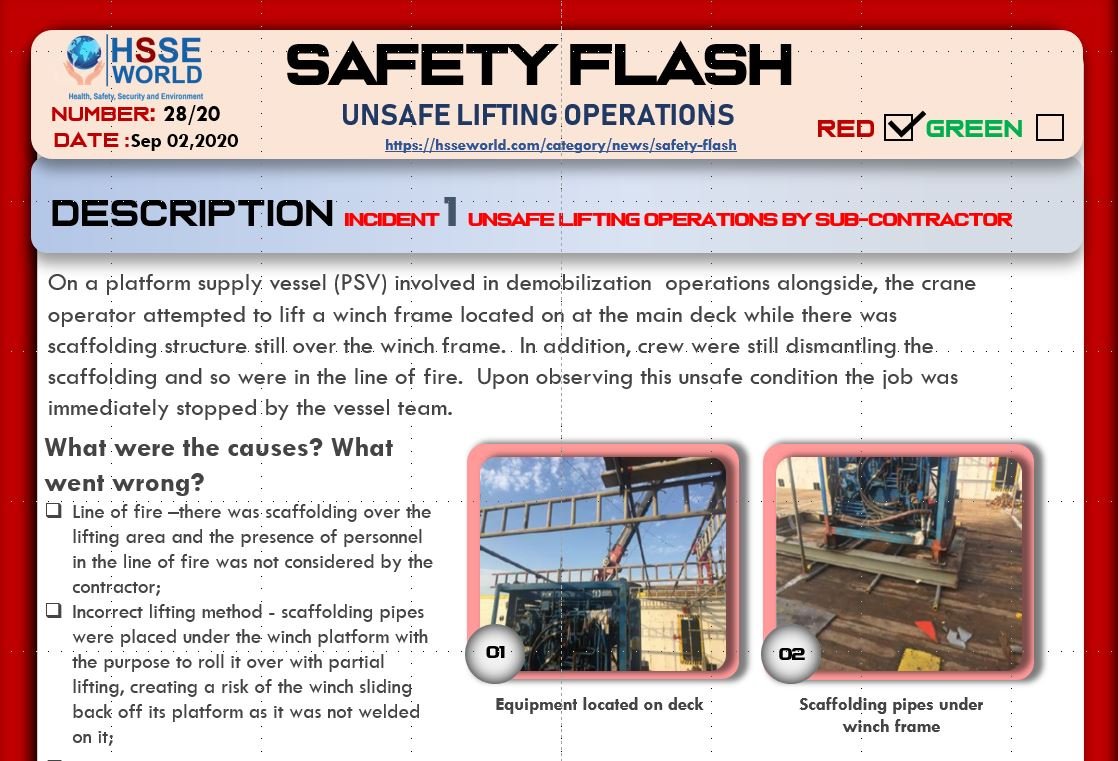What happened
For the purpose of a rescue at height drill, a person on the main deck suspended himself 1,5 meters from the deck in a safety harness with a ladder stand-by, while crew gathered on the bridge.
After contacting the crew on the bridge by radio the person in the safety harness stepped on the ladder for a second time to reposition the safety harness. After this, the person stepped off the ladder to make it look like a real situation for rescue.
A fall arrestor was used for lifting the person to disconnect him from the sling he was hanging on. During this phase of the exercise, he passed out and lost his consciousness whilst being lifted. At this time the crew members on deck were not sure if the situation was real, or ‘played’ as a scene for the drill?

Once lowered to the deck the crew discovered blood coming from his mouth and directly applied medical first aid to the casualty, realizing the situation was real! Further medical treatment was immediately carried out. Medical oxygen was applied, and the Automated External Defibrillator (AED) was connected for heart monitoring.
Authorities and the office Emergency Response Team were informed immediately, and a nearby sister company vessel assisted. The casualty was medevacked by helicopter to a hospital, shortly after regaining consciousness. After numerous scans and tests, the person was discharged from the hospital within two days to recover at home and more tests to be conducted, as no clear diagnosis could be determined at this time. Amongst the conclusions was that the immediate first aid response by the vessel crew significantly reduced the impact on the person. Severely emotionally shaken by the experience, the crew looks back on an incident that obviously could have resulted in a very different / less favorable outcome. Due to prudent action by the crew, this was fortunately prevented.
What were the causes? Why did happen?
When suspended in the harness, the straps around the legs and limbs may have obstructed the blood flow, as indicated in the graphics on the following page, which is commonly known as suspension trauma.



Corrective Actions Taken / Recommendations
- Performing drills and exercises to a realistic scenario is essential to ensure the crew can act promptly and effectively in emergency situations. However, the risks of such exercise shall always be carefully assessed.
- The risk of trauma from being suspended in a harness can be effectively reduced by using suspension trauma relief straps after falling into the harness, this places the weight of the body on the feet while awaiting rescue.
you can download the Safety Flash by clicking download below

These flashes summarise key safety matters and incidents, allowing wider dissemination of lessons learned from them. The information below has been provided in good faith by members and should be reviewed individually by recipients, who will determine its relevance to their own operations. The effectiveness of the safety flash system depends on receiving reports from members in order to pass on the information and avoid repeat incidents.
Source and download
| Alert ID: | 20/12 |
| Published: | July 02 2021 |
| Download: | Safety flash (333 kB) |
Download the Safety Flash
Read More Safety Flash
- Safety Flash: Mobile concrete placing boom overturn incidents
- Safety Flash: Not Following Work permit and Isolation Procedure
- Safety Flash: Floorman arm pinned by Pipe Handling Equipment
- Safety Flash: Suspension Trauma
- Safety Flash: Fatality: explosive failure of corroded fire extinguisher
- Safety Flash: Crewman fell to his death through faulty grating
- Safety Flash: Fatal accident during cargo operations on Karina C
- Safety Flash: Overturning of the Lifeboat Kristin Faye
- Safety Flash: Short circuit on 440v AC bus bars-arc flash
- Safety Flash: Towing Fatality
- Safety Flash: Unsafe lifting operations
- Safety Flash: Electric Shock Resulting in Burn
- Safety Flash: LTI- Loss of Finger Tip and Nail
- Safety Flash: Explosion And Fire Onboard The chemical Tanker STOLT Greenland
- Safety Flash: Finger injury caused by incorrectly secured console cover
- Safety Flash: double Man overboard Resulting in one fatality
- Safety Flash: Alcohol-based hand sanitizer warning
- Safety Flash: Dump truck operator fatally electrocuted by high-voltage line
- Safety Flash: Laborer Dies After Footing Collapse – North Carolina
- Safety Flash: Reducing the risk of propane explosions in food trucks
- Safety Flash: Teen Roofer Electrocuted when Ladder Contacts High Voltage Power Line
- Safety Flash: Worker dies from carbon monoxide poisoning while using pressure washer
- Safety Flash: Explosion during welding operation
- A Bathtub Refinisher Dies from Methylene Chloride Exposure :Safety Flash
- Landscaper dies after auger entanglement:Safety Flash
- Worker dies after falling from scaffold
- Fatality Investigation: Orchard Worker Dies After Falling Off Tractor
- LTI: Fall from height leading to Multiple Fractures
- Operator dies when forklift falls off loading dock
- Worker struck, killed by outrigger
- Worker killed by platform
- Scaffolding Components
- Construction Worker Killed When Pipe Rolls Off a Trailer
- Near-Miss: Shackle Configuration
- Improper use of lifeline results in death of worker




